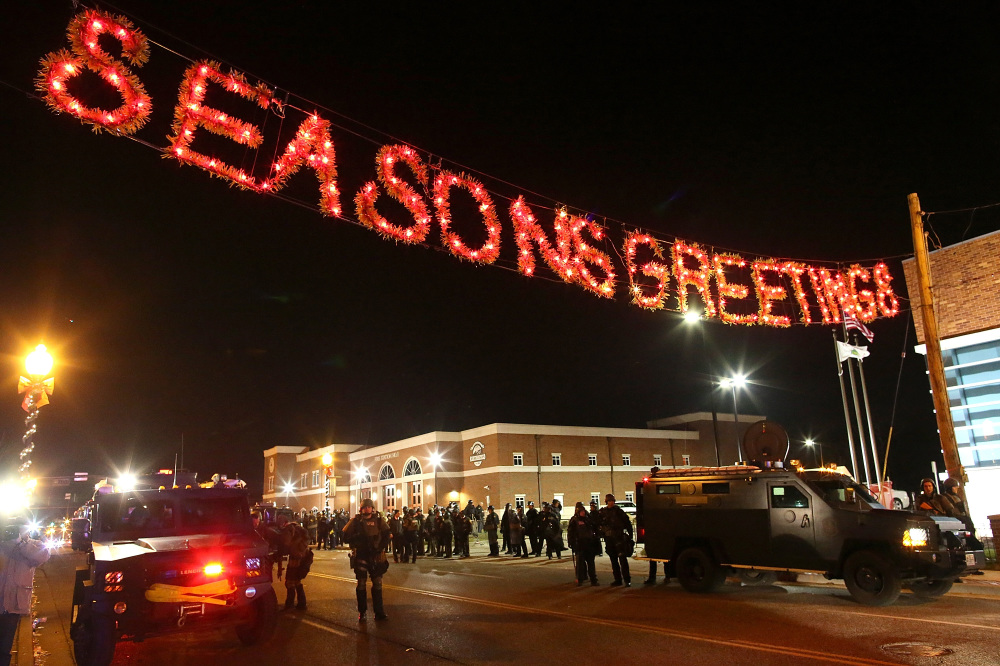When Oscar Baker III heard the court’s decision not to indict former police officer Darren Wilson for shooting and killing 18-year-old Michael Brown, he was upset, but not surprised.

Baker said the racial divide and culture in the southern U.S. will never change. The third-year St. Thomas student grew up in St. Augustine, Florida and has experienced that divide.
Baker said when he was growing up, a woman ran over his three cousins with her SUV purposely. One cousin has permanent brain damage, one fractured his skull and the other escaped and jumped in a ditch. The woman served five years in prison. His cousin robbed a bank with a note. He served thirty years.
“Of course I’m biased, but what was more damaging?” said Baker. “She hit three black kids, but it didn’t matter that much in the judicial system’s eyes.”
Former-officer Wilson shot and killed Brown this August in Ferguson, Missouri. He reportedly told Brown and a friend to move from the middle of the street to the sidewalk. This led to an altercation between the officer and the pedestrians. Wilson said Brown made a move toward him and appeared to reach for a gun when he shot him at least seven times. Witnesses reported Brown held his hands above his head when he was shot. Wilson resigned Saturday.
Many of the 20,000 Ferguson residents, 60 per cent of whom are black, protested that the white cop killed Brown because he was black, and thought the killing was not justified.
Last week, a grand jury decided not to indict Wilson for the incident. This re-sparked outrage and protest in Ferguson. Buildings were set on fire and the National Guard and police were tear gassing citizens on the streets.
After the court decision, there were rallies across the U.S. and Canada against the ruling. STU alumna Ashley Rerrie participated in a rally in Toronto, where she is studying at York University. The rally was called “Black Lives Matter – Toronto Peaceful Protest Action”.
“I do plan to do more,” said Rerrie. “The shooting of Mike Brown was not just an isolated incident, but an act of violence that stems from institutionalized racism, and it’s time that we organized and fought back against that.”
When Rerrie found out about the decision not to indict the officer, she said she was more upset than she thought she would be.
“My stomach sank. I felt hollow. I was in shock that the justice system would so blatantly disregard the value of Brown’s life. I was in shock that after 108 days of protest, nothing would be done.”
She said the rally was comforting because she found others feel the same way she does.
“It created a space for black people in Toronto to stand together and express our grief, frustration and outrage over the decision.”
Rerrie said people have the wrong idea that racism is something that ended with the Civil Rights movement. She said that is not the case.
“It makes me fearful for my family, for my cousins, for other young black men and women who can be seen as threats because of their very existence. It reminds me that there is still virulent anti-black racism in the world.”
St. Thomas criminology professor Josephine Savarese said a big reason this incident happened is because of the history of slavery in Missouri.
In 1825, Missouri created a law that said blacks were incompetent in cases against whites. In 1857, in the famous Dred Scott case, a slave attempted to assert his freedom in Missouri because he had lived in other jurisdictions where he was a free man. The outcome was that slaves could not be citizens.
“This historical memory is really present in Missouri. And so there are unique historical factors that would have coloured that incident,” said Savarese.
“And so we fast forward from 1825 when blacks couldn’t give testimony against whites to 2014 when they’re not believed in the Michael Brown grand jury,” she said. “So although there’s been a couple of hundred years that have passed, this context still frames and contains this incident.”
Michael Brown’s body was left in the street for four and a half hours after he was shot.
“To me, it speaks to the slavery context that this is the desire to send the message that resistant black bodies will be brought into submission and put on display,” said Savarese.
Savarese said a solution to stopping this from happening again is to change the culture and mandate of policing.
“We need to reaffirm a model of community justice and community policing and reinforce the message that police work for and with communities rather than against communities.”
